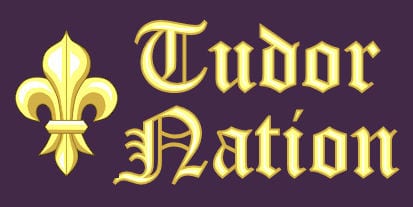There were a total of six Tudor kings and queens, but only five of them were crowned. They are arguably the most famous and popular of the British monarchs, ruling over a period of great change in culture, philosophy and religion. The Tudor kings and queens were devout, educated and powerful people. They promoted their loyal servants but ruthlessly eliminated their enemies.
King Henry VII 1485 – 1509
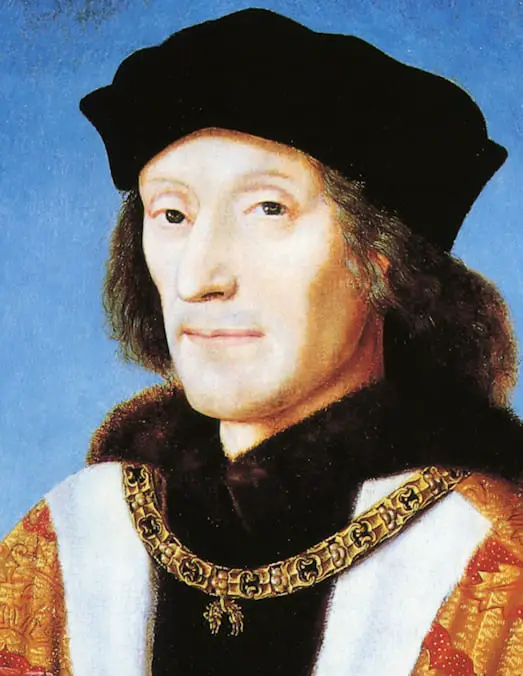
Henry Tudor, son of Margaret Beaufort and Edmund Tudor, became King Henry VII after defeating and killing Richard III at the Battle of Bosworth Field in 1485. He married Elizabeth of York uniting the houses of York and Lancaster, which ended the Wars of the Roses.
Henry was determined that the new dynasty would succeed and set about making alliances with other countries. In the early years of his reign he faced challenges from the pretenders Lambert Simnel and Perkin Warbeck.
Tragedy struck in 1502 when the heir to the throne, Prince Arthur, died. The following year saw the death of Elizabeth of York shortly after giving birth to a daughter, Katherine who also died. With only one surviving son, Henry VII was concerned for the succession. He considered re-marrying but negotiations came to nothing.
King Henry VII made changes to the way crown finances were collected and when he died in 1509 England was a rich and prosperous country. He was succeeded by his son, Henry.
King Henry VIII 1509 – 1547
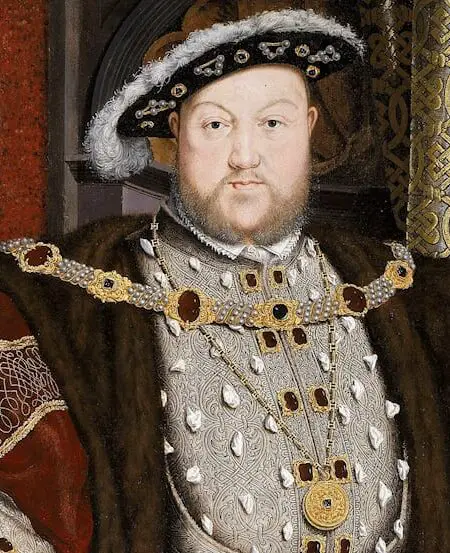
Henry VIII is the best known of the Tudor kings and queens, he was the second son of Henry VII and was destined for a life in religion. He became heir to the throne after his brother, Arthur, died and succeeded his father in 1509. He married his brother’s widow, Catherine of Aragon, two months after becoming king. Their son, Henry, born in 1511 lived for just six weeks but their daughter, Mary, born in 1516 thrived.
Around 1527 Henry became concerned that his lack of male heir was a punishment from God for marrying his brother’s widow. He was also infatuated with Anne Boleyn and wanted a divorce so he could re-marry. Thomas Wolsey, his chief minister, was instructed to get him a divorce. However, Catherine refused to agree to a divorce and the Pope continually delayed passing judgement on Henry’s marriage. Thomas Wolsey fell from favour and was replaced by Thomas Cromwell. Determined to marry Anne Boleyn, Henry agreed to separate from Rome and become Head of the Church in England.
Henry VIII married Anne Boleyn in 1533 but she failed to give Henry the son he desired and was executed on a charge of treason in May 1536. Wife number three, Jane Seymour, gave Henry the son he desired but she died days after the birth of Prince Edward. With just one son, Henry was very concerned for the succession. At the suggestion of Thomas Cromwell, Henry agreed to marry German princess, Anne of Cleves. However, he disliked her on sight, the marriage was not consummated and she was divorced within six months.
The rise of the pro-Catholic Howard family when Henry married Kathryn Howard, brought an end to Cromwell’s religious reforms and he was executed. Kathryn was also executed when details of her early life and relationship with Thomas Culpeper were revealed. Henry chose Katherine Parr to be his sixth wife, she was a Protestant and hoped to be able to persuade the king to make religious reforms. However, although Henry had instigated the English Reformation he remained a Catholic at heart. Katherine kept her true religion hidden and out-lived her husband.
In his early years, Henry had been renowned as a superb athlete and sportsman. He excelled at the joust and real tennis. On 24th January 1536 he fell from his horse and was then crushed when his armoured horse rolled on top of him. He was unconscious for around 2 hours and it was feared he would die. The accident caused a leg injury which prevented him from seriously competing in sports and also caused him problems for the rest of his life. After the accident his personality changed and he became more paranoid, angrier and unpredictable.
Unable to play sports, Henry quickly put on weight, which in turn placed more strain on his legs. By the time of his death in 1547 it is believed that he weighed 28 stone and had a waist measurement of 50 inches. He was succeeded by his son, Edward.
King Edward VI 1547 – 1553
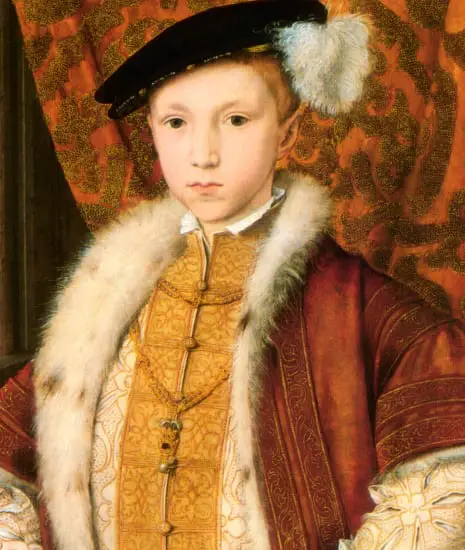
Edward VI succeeded his father as king at the age of 9 years. The country was run by a regency council headed by Edward’s uncle, Edward Seymour, Duke of Somerset, as Lord Protector. King Edward and the Seymour family were committed Protestants and religious reforms were introduced. The most notable was the Book of Common Prayer that replaced the traditional service. It was not popularly received and there were riots and demonstrations against its use.
Henry VIII had spent most of the money amassed by his father and England was not the rich nation it had been. Edward inherited conflicts with both Scotland and France which increased the financial drain on the country.
In 1550, John Dudley became leader of the regency council. He agreed a peace with France and withdrew the English army from Scotland. He debased the coinage to try to improve the economy but it was two years before any real effect was felt.
In 1553 Edward became seriously ill. The will of King Henry VIII named his daughter Mary as successor. However, Mary was a Catholic and both Edward and the council did not want a return to Catholicism. Edward VI signed the Devise for the Succession which named Lady Jane Grey, Protestant granddaughter to Henry VIII’s sister, Mary as his successor. In May 1553, John Dudley, Duke of Northumberland, married his son, Guildford to Lady Jane. Edward died on 6th July 1553 at the age of fifteen.
Lady Jane Grey – 10th July – 19th July 1553
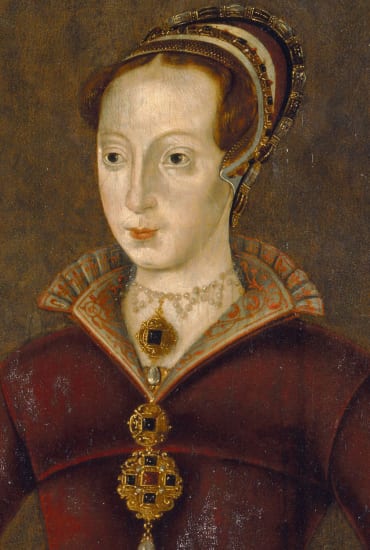
As directed in the Devise for the Succession signed by King Edward VI, Lady Jane Grey was proclaimed Queen of England on 10th July 1553.
When Henry VIII’s daughter Mary heard that Jane had been declared Queen, she called for the people to rally to her cause. Despite the efforts of the Dudley family, Mary was declared Queen of England on 19th July.
Mary recognised that Lady Jane had been an innocent pawn, used by the Duke of Northumberland. She ordered her imprisonment but did not sign a death warrant. In 1554, Jane’s father, Henry Grey, joined Wyatt’s rebellion against Mary’s marriage to Philip of Spain. Mary became concerned that there would be further risings in favour of Jane. Lady Jane Grey and her husband Guildford were executed on 12th February 1554.
Jane’s reign was the shortest of the Tudor kings and queens lasting just 9 days and she was not crowned.
Queen Mary I – 1553 – 1558
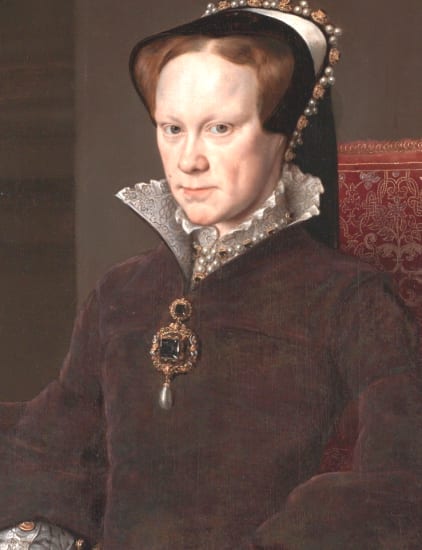
Mary I was the daughter of Henry VIII and Catherine of Aragon and was a committed Catholic. Her half-brother Edward and his Protestant council had try to by-pass her in the succession but the people had rallied to her cause and she became Queen on 19th July 1553.
Queen Mary immediately restored Catholicism and reversed the Protestant doctrines put in place during her brother’s reign. Her policy of burning those who refused to recant their Protestant faith earned her the epitaph ‘Bloody Mary’. Yet, her reign saw far fewer people executed than either her father or her half-sister Elizabeth.
The decision to marry King Philip II of Spain was not well received by her councillors or her people. Many believed that England would become subject to the rule of Spain. Nevertheless, the marriage went ahead on 25th July 1554. Mary agreed to support Philip in his war with France, a decision which resulted in the loss of Calais, England’s last possession in France.
Mary desperately wanted to produce an heir to the throne to preserve the Catholic faith. Next in line was her Protestant half-sister Elizabeth. In 1554, Mary believed she was pregnant. She exhibited all the signs of a pregnancy and even stated that she had felt the child move. However, when no child had appeared by Summer 1555, it became obvious that it was a phantom pregnancy. Philip left for Spain shortly afterwards.
It is now believed that Mary suffered from cancer of the womb and/or ovaries. She died on 17th November 1558 and was succeeded by her half-sister, Elizabeth.
Queen Elizabeth I – 1558 – 1603
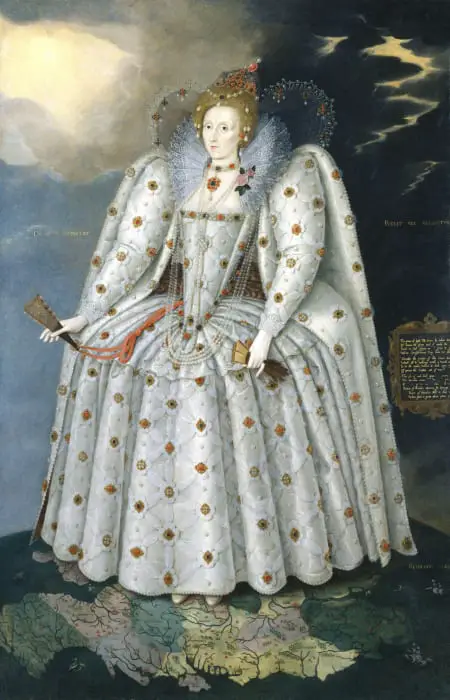
Elizabeth I became Queen after her sister Mary I died without an heir. She was the daughter of Henry VIII and Anne Boleyn. Many people believed that Henry VIII’s marriage to Anne Boleyn was unlawful since Catherine of Aragon was still alive at the time of their marriage. In their eyes this made Elizabeth illegitimate and as such should not be queen. Instead they favoured Elizabeth’s Catholic cousin, Mary Queen of Scots. When the Queen of Scots fled to England seeking sanctuary from Elizabeth she had no choice but to place her under house arrest. However, she then became the focus of plots to remove Elizabeth from the throne. The Babington Plot was uncovered in 1586. It was a serious threat and Elizabeth reluctantly signed Mary’s death warrant. The Queen of Scots was executed on 5th February 1587.
Philip of Spain was angered by Elizabeth’s support of Protestants in the Spanish Netherlands and by the actions of piracy committed by Francis Drake. The execution of the Queen of Scots was the trigger for Philip II of Spain to take action. . The Spanish Armada was sighted off the coast of Lizard Point on 19th July 1588. The Armada sailed through the English Channel towards Calais where it was to rendezvous with the Duke of Parma’s army. The English navy pursued and harried the Spanish ships through the Channel. English fireships were used to break the formation of the Armada. Soon afterwards the weather changed and hurricane-force winds dashed Spanish ships on the rocks and blew others into the North Sea. Elizabeth made much of the ‘victory’ and hailed it as a triumph.
Queen Elizabeth took the decision not to marry. Although she was aware that this decision had consequences for the succession, marriage also had consequences for the country. If she married a foreign prince or king, as Mary had done, then the country would come under the influence of a foreign power. If she married an English nobleman this could be seen as preferential towards one family and could lead to rivalries and factions within the nobility. Elizabeth had a very close relationship with Robert Dudley, Earl of Leicester, son of John Dudley, Earl of Northumberland and many thought they would marry. After Dudley died in 1588 she became close to Robert Devereux, Earl of Essex.
The sixteenth century saw the rise of the Age of Exploration. In 1577 Francis Drake was knighted after successfully circumnavigating the globe. Columbus discovered the Americas in 1492 and Spain profited from the conquest of much of central and south America. Portugal had taken much of the west coast of Africa and Brazil. Walter Raleigh sailed further north and established and English settlement in North America. He named it Virginia in honour of the Virgin Queen Elizabeth.
The later years of Elizabeth’s reign saw her increasingly isolated. She had outlived most of her trusted advisers and was less trustful of those around her. The conflict with Spain had dragged on and England was facing rebellion in Ireland. The drain on finances saw the country far less wealthy than it had been early in her reign.
Elizabeth died on 28th April 1603. She was the last of the Tudor kings and queens. Shortly before her death she had nominated the son of Mary Queen of Scots, James VI of Scotland, to succeed to the English throne. The accession of King James saw the end of the Tudors and beginning of the Stuarts.
Published May 2020 – Updated – Nov 23 2024
Harvard Reference for this page:
Heather Y Wheeler. (2020 – 2025). Who Were the Tudor Kings and Queens? Available: https://www.tudornation.com/who-were-the-tudor-kings-and-queens Last accessed June 15th, 2025
